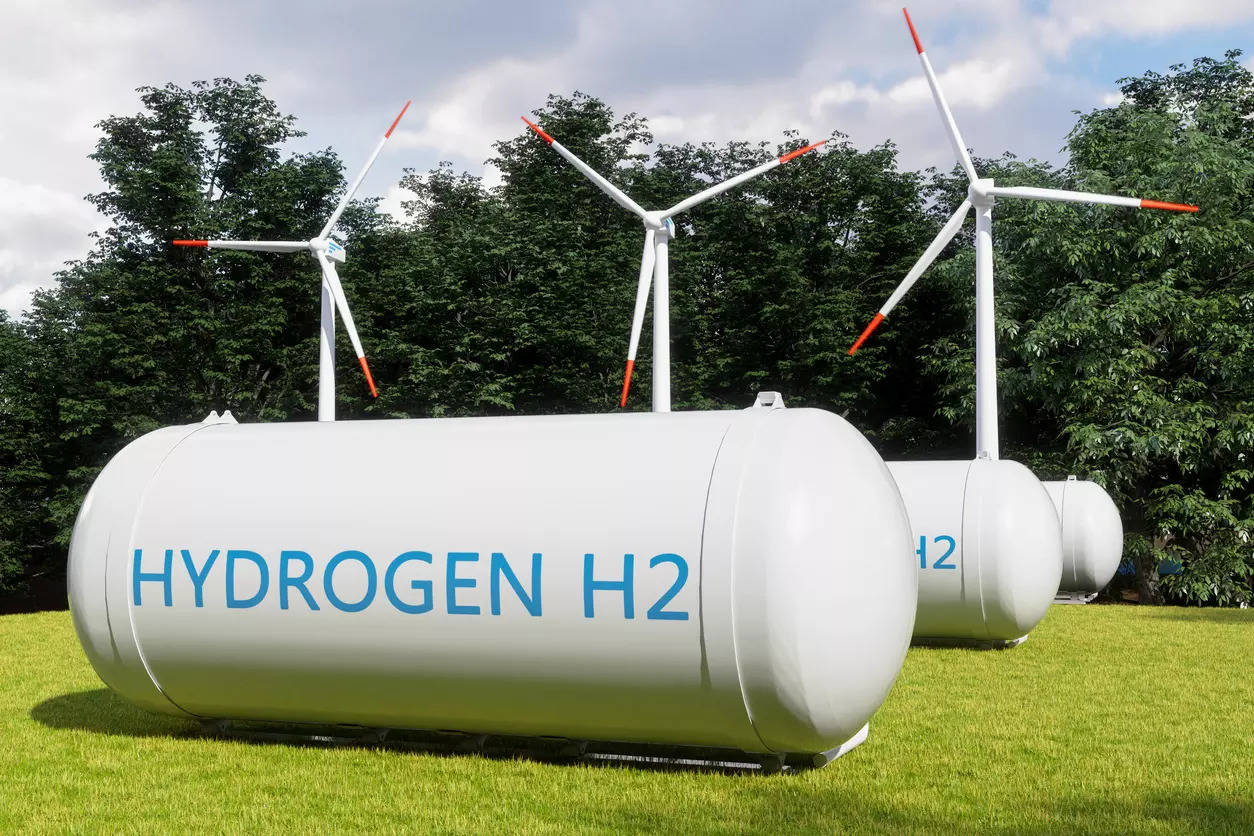
Looking at the extreme potential of green hydrogen, there has been a sudden frenzy over hydrogen in recent times. Green hydrogen is considered as one of the best and cleaner alternative fuel options.
Hydrogen that is produced using renewable energy through electrolysis is known as Green Hydrogen. In this process, hydrogen is separated from oxygen in the water through an electric current. Renewable sources, such as solar or wind, are used in the requirement for electricity for electrolysis. Therefore, no greenhouse gasses are emitted in this method of hydrogen production.
At present, less than 1 percent of hydrogen generated is green hydrogen. As per the International Renewable Energy Agency (IRENA), hydrogen will make up 12 percent of the energy mix by the year 2050. It was further suggested that around 66 percent of this hydrogen used should come from water, not natural gas.
The Adani Group recently made an announcement that it has partnered with France’s TotalEnergies to create a green hydrogen ecosystem. On the other side, Reliance Industries will also invest Rs 75,000 crore over the next three years to set up a new clean-energy business.
- How much is the demand for green hydrogen in India?
To produce ammonia and methanol for industrial purposes including refineries and fertilisers, more than 6 million tonnes of hydrogen is used by India every year. It is assumed that India’s demand for hydrogen will increase five-fold and consumption of hydrogen is expected to surge by 28 million tonnes by 2050. - How can Indian industries adopt green hydrogen?
According to The Energy and Resources Institute (TERI), it costs $5-$6 in production of per kg of green hydrogen. This gets expensive for the industries like steel and fertilizers to adopt this source of clean energy. So at least $2 per kg might help these industries to come forth, but reducing the cost is unlikely till India increases its electrolysers manufacturing. - What is the government’s policy on green hydrogen?
The government launched the National Hydrogen Energy Mission (NHEM) in 2021-22. This year, the Ministry of Power notified Green Hydrogen Policy (GHP) and welcomed industry leaders. The policy will help meet the target of 5 million tonnes of green hydrogen production by 2030. - What is green hydrogen used for?
It is mainly used in the chemical industry for manufacturing of ammonia and fertilisers. It is also widely used in the petrochemical industry for the production of petroleum products. - What are the risks associated with green hydrogen?
Risks are associated with electrolysers which are used to produce green hydrogen. Other exposures like fracture of pressurised pipes or compartments, freezing water in the stack, and breakages in membranes. - What is the future of green hydrogen fuel?
Green hydrogen has the capability to help store intermittent renewable energy, works for maritime shipping and aviation as a ‘zero-emissions’ fuel, and it can be used in high-heat industrial procedures. - How is green hydrogen made?
Green hydrogen is hydrogen that is produced by splitting water by electrolysis. This process produces only hydrogen and oxygen. While we can use the green hydrogen and vent the oxygen to the atmosphere without any negative impact. To achieve electrolysis, the electricity is required. - Who is the largest producer of green hydrogen?
China is the top country that consumes and produces hydrogen more than anyone else, its current annual usage is over 24 million tonnes.